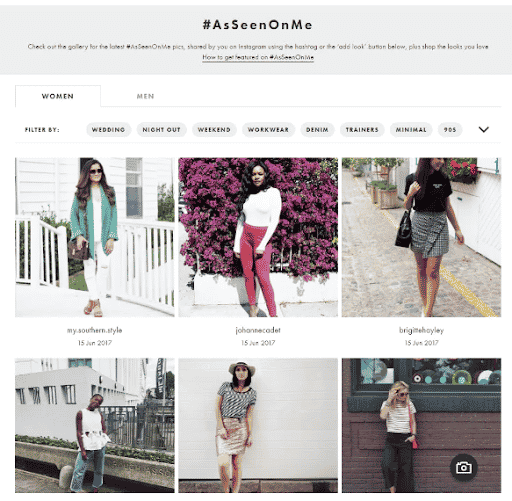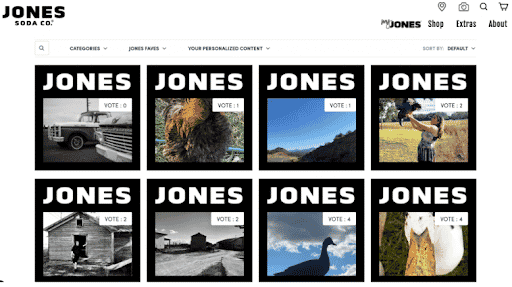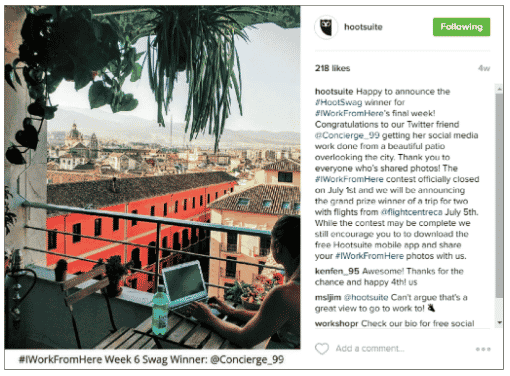Why Is User-Generated Content So Important?
July 29, 2022
7 Minute Read

Today we’re going to be looking at User-Generated Content, or UGC as you will see it referred to below. This type of content can have big impacts on your marketing strategy and bottom line, and as you may have guessed from the title of this blog…it’s important. But before we unpack why user-generated content is so impactful and important, we must define it.
What Is User-Generated Content?
UGC is any form of content (video, images, text, audio) that has been created and posted by people (customers), rather than a brand. However, at its core it can be utilized as a psychological marketing tool. It is a sign of trust and authenticity that places customers and real people at the forefront, while at the same time promoting brands and increasing conversions. Let’s explore its impact on purchasing behavior and its importance as part of your marketing mix.
UGC Is Authentic
A study conducted by Nosto found that 86% of consumers say authenticity is important when deciding what brands to support. The same study found 60% of consumers say content from friends or family influence their purchase decisions. Although this may not come as a surprise, it reinforces the idea that people are searching for authentic interactions with brands, and are becoming increasingly aware of inauthentic advertising.
One aspect that makes UGC so authentic is that it is created by unbiased and genuine fans of your brand – people who took the initiative to post content using your products, whether you prompted them to or not. As a result this makes UGC more impactful than influencer marketing (about 9.8x times more influential according to Stackla), because it comes across as more trustworthy and authentic.
Take this #AsSeenOnMe Campaign that the fashion brand ASOS ran for example. This is simple UGC at work, highlighting real life people wearing Asos products. Potential customers can now view Asos products in a different light – seeing the clothes on a variety of body types, and in a more relatable fashion vs. traditional models and professional studio photography.

UGC Is Conversational and Humanizes Your Brand
In a broad sense you can think of UGC as a more modern form of testimonial or word of mouth. However, the testimonial comes to life in the form of imagery and video that allows the ideal customer to connect with the brand in a more meaningful way. Through UGC customers can see people similar to them using the products in their everyday lives – influencing their purchasing behavior by giving them a symbol of trust that traditional marketing does not provide.
UGC also does a great job of being conversational and humanizing brands. By showcasing customer’s imagery on social media for example, it shows customers that your brand is transparent, willing to open dialogue, and is receptive to customer feedback. Do not forget to utilize LinkedIn to humanize your brand and reach more people, as employee networks typically have 10x more connections than brands have followers.
One great example we often overlook in UGC is Jones Soda. They were implementing these practices in 2010 before much information was published about using UGC as a marketing tool. They ran a contest where people uploaded a photo in hopes it would be printed on the front label of a Jones Soda bottle. By offering up a coveted front and center spot on their label, this campaign showed Jones Soda is inclusive and values their customers.

UGC Increases Engagement
A study by Comscore found that when brands used a mixture of professionally-produced content and user-generated content, brand engagements rose 28%. The reason – traditional marketing and UGC marketing appeal to different aspects of a customer’s purchasing behavior. While professional brand content helps customers understand importance and key features, the user-generated content is more efficient at “producing emotional intensity, key message communication, and ease of relating to.”
When you combine these pieces together, you are left with a potential customer who not only understands your product, but can relate to your brand. A portion of this feeling UGC elicits is a feeling of inclusion and involvement. When customers feel they are a part of your brand, they are more connected, and feel like they can be heard and seen. This applies to existing customers too, and leads to increased participation in UGC campaigns that are prompted by brands (vs. passively gathered).
UGC Is Cost-Efficient
Marketing budgets are often difficult to stretch, especially when you are producing professional content and videos. This makes UGC a great way to supplement your traditional marketing since there is often little to no cost involved. One important note is to always ask for permission to use people’s content, and give credit where applicable. We recommend speaking with a legal team to ensure that you are up-to-date on the latest policies, as a release form may be needed for certain situations and industries.
UGC in B2B
User generated content does not just start and end with consumer products. 72% of B2B marketers are saying content marketing increases their engagement and lead generation. Content marketing should not be overlooked, and many B2B companies are finding ways to benefit from UGC to soften their image and become more approachable. For example, Hootsuite, a social media marketing and management platform, hosted a #IWorkFromHere remote work photo competition. The important thing for B2B marketers is to think about how people use your products and what glimpse they could offer you of their everyday life using the products.

Another important consideration for B2B marketers is utilizing employees for content. Content that comes from employees is also considered UGC, and contributes the same amount of authenticity and trust we talked about in the beginning. For example, using employee generated content on your careers page could help gain new employees and also help retain customers by showing them a glimpse of your culture.
How Can UGC Work for You?
UGC is great to have, but marketers should be asking how it fits in with your greater marketing goals. When your marketing team is strategizing for the year, keep UGC in mind and how you might be able to add it to your mix and compliment existing campaigns. This could include using tools like Tint to help you find UGC for your brand, or a full campaign that you prompt customers to participate in, therefore having more control over what type of content you want to garner.
Most times, the conversation surrounding UGC centers on social media. Although most UGC assets are gained via social media channels, they should be used in other areas of your marketing as well like:
- Social Channels (across all applicable channels)
- Website – Highlight your UGC in banners on product pages to cut through the clutter of traditional images and add authenticity. Examine every area of your website including your abandoned cart.
- Email Marketing – Using UGC here reinforces the human approach of your brand and increases email engagement. You can also read our tips on how to leverage email marketing to fuel your inbound strategy.
- Physical Location or Product Packaging
Final Notes on UGC
UGC can be used in all stages of your marketing funnel to reinforce your existing professionally developed content, add authenticity to your brand, and act as a trustworthy testimonial to your product and brand integrity. It helps cut through the clutter of traditional marketing and plays to a more emotional side of customer’s purchasing behavior.

Jon Pappas
Jonathon is the Director of Organic Search at BFO. He’s a reliable and consistent member of our team and is very detail-oriented and client-focused.
CATEGORIES
SUBSCRIBE TO OUR BLOG
Stay up to date with the latest industry best practices in digital marketing!























.png?width=339&height=179&name=Webinar%20Banner%20(1).png)



.png?width=339&height=179&name=July%20Webinar%20(Newsletter).png)

.png?width=339&height=179&name=Webinar%20Banner-April-02%20(1).png)
%20(4).png?width=339&height=179&name=Webinar%20Banner-May-02%20(1)%20(4).png)




.png?width=339&height=179&name=March%202023%20Webinar%20Ad%20(autoresponder).png)

















































